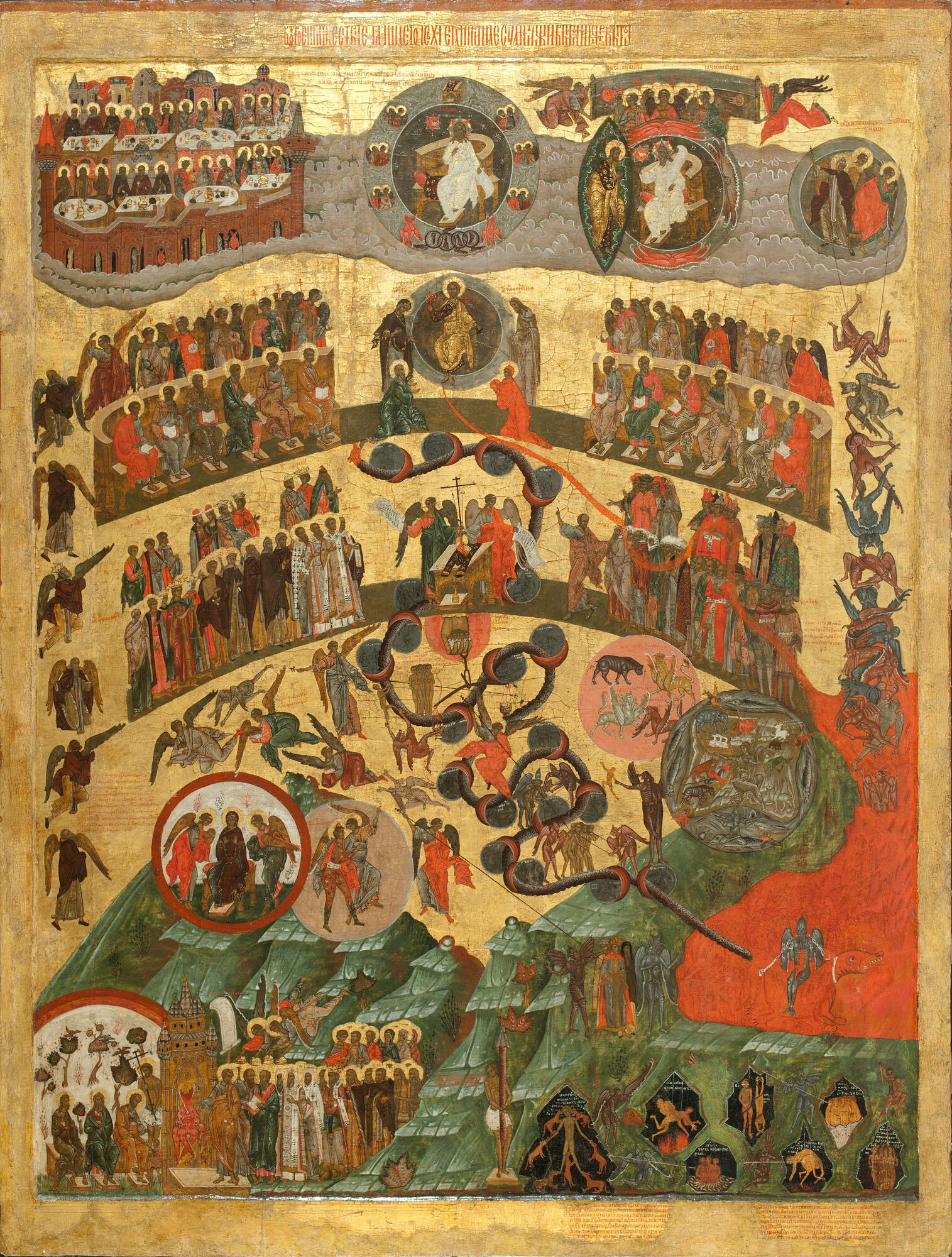Along with the Revelation of Saint John the Theologian, the iconography of the Last Judgment comes from the parables of Jesus, Old Testament eschatological prophecies, hagiographic works, and apocrypha. The central image of Jesus Christ — the Judge in glory — is depicted in the middle of the second row from the top. With His right hand, He blesses, and in His left hand, He holds a lowered sword.
Jesus Christ is flanked by the Virgin Mary and John the Baptist, with Adam and Eve prostrating themselves at His feet. The same row includes the Twelve Apostles holding open books, six on each side, and two groups of angels behind them. Below, there is the image of the Hetoimasia, or the prepared throne. There is Christ’s robe on the throne and a closed book of the Gospels on top of it.
At the foot of the throne, there is a vessel in which, according to the Bible, Christ’s blood was collected. Behind the throne, there is a cross with two angels standing before it. Standing to the right of the throne are the righteous, and to the left — the sinners expecting judgment. The righteous are represented in two rows according to the rank of holiness. The sinners are depicted wearing the clothes of different nations. In front, the Prophet Moses holds the beard of one of them with his left hand and points to Christ with his right.
In the following row, under the throne, a hand with righteous souls, represented by naked infants, holds scales — the measure of righteousness — in a heavenly semicircle. Under them, angels and demons are depicted fighting for human souls. In the circle, animals and fish are shown spewing out parts of human bodies.
In the neighboring circle is the vision of the Prophet Daniel — an allegory of the Four Kingdoms of the Earth to be replaced by the Kingdom of God. In the lower part of the icon, there are the traditional images of Paradise and Hell. In the Garden of Eden, the Virgin Mary is enthroned among the angels.
Below to the left is
Gehenna the Fiery with the Devil seated on a two-headed monster and bearing the
soul of Judas. With one head, the monster swallows the souls of sinners, and
from the other comes a serpent, which rises to the feet of Adam. The 19 rings
on the serpent’s body feature allegorical images of ordeals that a human soul
must pass before finding the Kingdom of Heaven — “Pride”, “Slander”,
“Remembering Evil”, “Covetousness”, “Greed”, “Envy”, “Adultery”, “Conceit”,
“Drunkenness”, “Lust”, “Anger”, “Blasphemy”, “Heresy”, “Magic”, “Usury”,
“Theft”, and “Wrath”.


